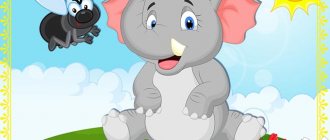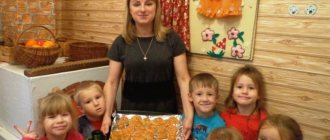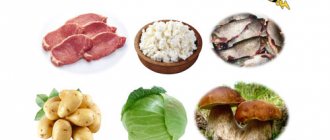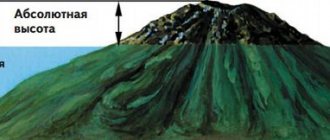Project: “Green Rescuers - Medicinal Plants”
Project on the topic: Green rescuers - medicinal plants
About the project:
Project type:
cognitive and research.
Project duration
: 2 weeks (from June 12 to June 26).
Project participants
: children, teacher, parents.
Children's age
: 5-6 years.
Forms of work
: cognitive, productive, communicative.
Form of the final event
: design of the “Medicinal Plants” card index.
Relevance of the project:
Environmental education is one of the main directions in the education system; it is a way of influencing children’s feelings, their consciousness, views and ideas. Children feel the need to communicate with nature. They learn to love nature, observe, empathize, and understand that our Earth cannot exist without plants, since they not only help us breathe, but also treat us from diseases. We must protect and preserve them, and be able to correctly use their medicinal properties.
Caring for the health of the child currently occupies a priority position in preschool education. One of the means of preserving and strengthening health is the healing forces of nature.
Observing and examining plants in a group, and having learned that many of them can help human health, we decided to learn about their significance in people’s lives and their healing properties. Therefore, together with the students and their parents, an environmental project “Medicinal Plants” was developed.
Objective of the project:
creating conditions for introducing children to the world of medicinal plants, forming ideas about their role in improving and maintaining human health.
Project objectives:
for children: expand and develop children’s knowledge about medicinal plants, their health value, rules of use; develop and enrich vocabulary, encourage asking questions, compose descriptive stories;
for teachers: to deepen children’s knowledge on the topic “Medicinal Plants” and to convey this knowledge in accessible ways;
for parents: to increase parents’ interest in the environmental education of their children and to ecology in general, to form children’s ideas about medicinal plants.
Expected results
Children have developed knowledge about medicinal plants, their health value, and rules of use.
The vocabulary has been expanded, children have knowledge about the need to take care of themselves.
The skills of elementary cognitive and research activities have been formed.
Increased experience in the field of environmental education
Forms of work with parents
Questioning.
Cognitive (group, consultation, collective forms of communication).
Visual information (booklets, newspapers, drawings).
Recommendations for parents: to cultivate in children a cognitive interest in medicinal plants, to develop in preschoolers an interest in nature, a desire to actively explore natural objects. Foster a desire to preserve and protect the natural world.
Project stages
Preparatory
Practical
Final
Preparatory
Selection of visual material (illustrations, posters, books) on the topic “The World of Medicinal Plants.”
Questionnaire “What is the importance of medicinal plants in human life?”
Creating a card index of riddles, proverbs and sayings on a given topic.
Design of a stand for parents “How to properly use medicinal plants in everyday life.”
Practical
Cognitive development
| OOD on the topic “The World of Medicinal Plants”: give children an idea of the variety of medicinal plants; develop in preschoolers an interest in nature and a desire to actively explore natural objects; to cultivate a desire to preserve and protect the natural world, to follow accessible environmental rules in activity and behavior. | |
| To develop monologue speech in children, to enrich the vocabulary of preschoolers by expanding their understanding of nature. |
Artistic and aesthetic development
| OOD application “Pharmaceutical Chamomile”: Expand children’s knowledge about plants and their benefits for humans; foster respect for the environment. Exercise children in cutting out chamomile parts (stem, petal, leaves), and the ability to assemble a whole from parts. | |
| Cultivate accuracy in work; develop children's creative abilities. | |
Speech development
OOD Reading fiction:
Reading stories and fairy tales: N. Pavlova “The Tricky Dandelion”; A.A. Pleshakova “Green Pages”; N. Bychkova “Chamomile”, “Dandelion”; L. Gerasimova “Nettle”.
Memorizing poetry (O.I. Vysotskaya “Dandelion”, E. Nikolaeva “Nettle”, B. Zakhoder “Aloe”.
Reading legends about plants (geranium, Kalanchoe, aloe, mint, plantain).
Making riddles.
Artistic and aesthetic development
OOD drawing “Dandelion”:
Learn to convey the beauty of dandelion flowers and the shape of leaves. Strengthen the ability to independently draw flowers using the poking method (large, small ovals and circles). Learn to place flowers all over a sheet of paper, strengthen the ability to draw leaves and stems with a thin brush. Expand knowledge about medicinal herbs.
Observation of plants on the territory of the kindergarten:
| To instill respect for plants, a culture of behavior in nature, to give children the opportunity to examine the medicinal plants that grow on our |
territory of the kindergarten. Tell children that plants need light, warmth, water, and soil. Form an idea about
| the structure and development of plants and their relationship with various environmental factors, their significance in human life. Arouse interest in observing the process of plant growth. |
Final
| Making a card file “Medicinal plants”. Teach to distinguish medicinal plants from other plants; teach how to use certain plants for medical purposes. | |
To consolidate concepts about the relationship between the plant world and humans. To form ideas about some medicinal plants of the country.
Used Books:
“Green Tales” by T.A. Shorygin, Moscow. Prometheus. Book lover, 2003.
"Flowers. What are they like? T.A. Shorygina. Series “Journey to the world of nature. Speech development." Moscow, 2002.
“Young ecologist” S.N. Nikolaev. A series to help educators and teachers. Publishing house "Mosaic - Synthesis", 2002.
“Methods of environmental education in kindergarten” by S.N. Nikolaev. Moscow. "Enlightenment", 2001.
Methodological manual for the “Green Path” program Moscow. "Enlightenment", 2001.
“Green Path” by A.A. Pleshakov. Moscow. "Enlightenment", 2002.
11



